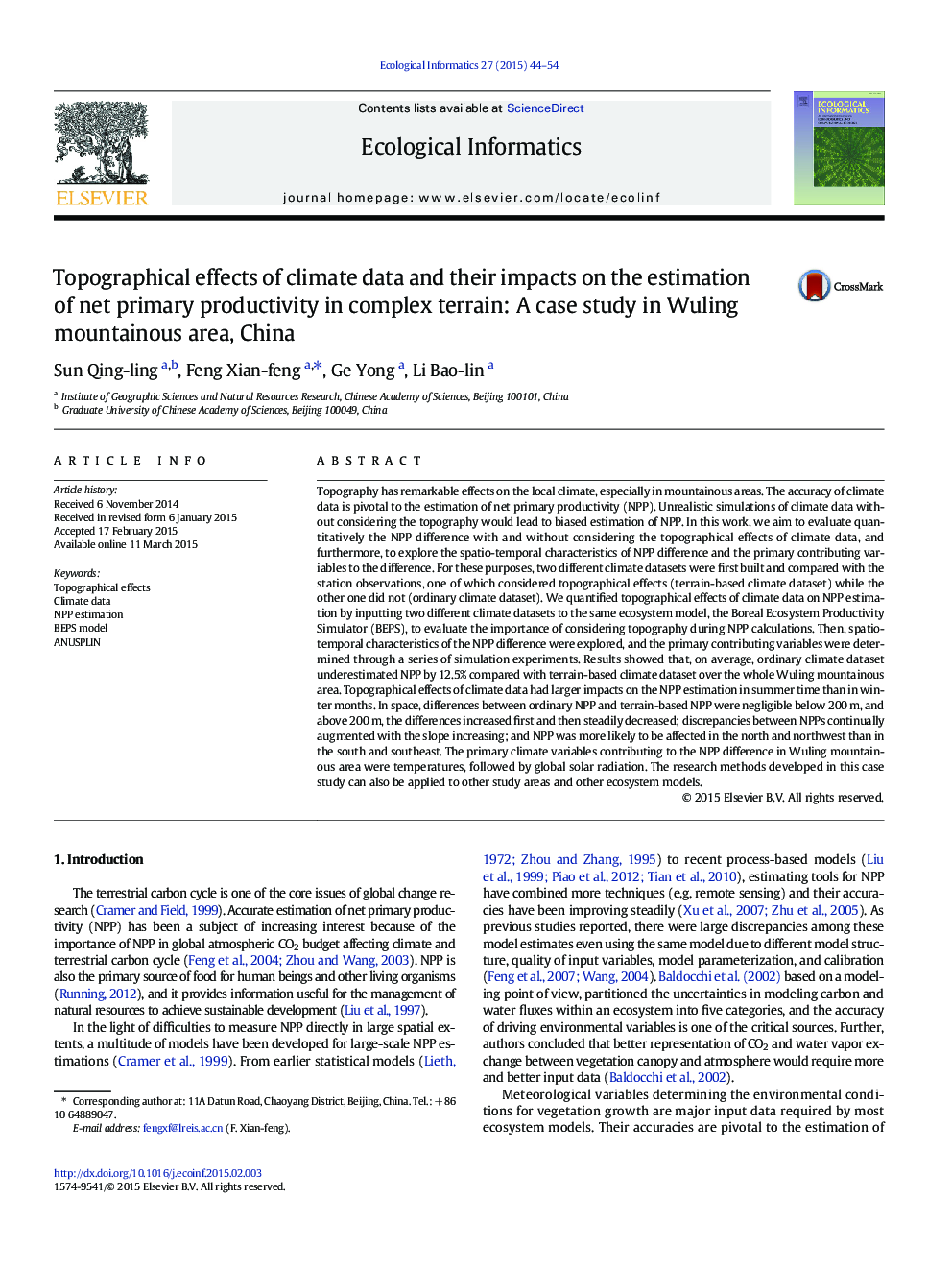| Article ID | Journal | Published Year | Pages | File Type |
|---|---|---|---|---|
| 6295939 | Ecological Informatics | 2015 | 11 Pages |
Abstract
Topography has remarkable effects on the local climate, especially in mountainous areas. The accuracy of climate data is pivotal to the estimation of net primary productivity (NPP). Unrealistic simulations of climate data without considering the topography would lead to biased estimation of NPP. In this work, we aim to evaluate quantitatively the NPP difference with and without considering the topographical effects of climate data, and furthermore, to explore the spatio-temporal characteristics of NPP difference and the primary contributing variables to the difference. For these purposes, two different climate datasets were first built and compared with the station observations, one of which considered topographical effects (terrain-based climate dataset) while the other one did not (ordinary climate dataset). We quantified topographical effects of climate data on NPP estimation by inputting two different climate datasets to the same ecosystem model, the Boreal Ecosystem Productivity Simulator (BEPS), to evaluate the importance of considering topography during NPP calculations. Then, spatio-temporal characteristics of the NPP difference were explored, and the primary contributing variables were determined through a series of simulation experiments. Results showed that, on average, ordinary climate dataset underestimated NPP by 12.5% compared with terrain-based climate dataset over the whole Wuling mountainous area. Topographical effects of climate data had larger impacts on the NPP estimation in summer time than in winter months. In space, differences between ordinary NPP and terrain-based NPP were negligible below 200Â m, and above 200Â m, the differences increased first and then steadily decreased; discrepancies between NPPs continually augmented with the slope increasing; and NPP was more likely to be affected in the north and northwest than in the south and southeast. The primary climate variables contributing to the NPP difference in Wuling mountainous area were temperatures, followed by global solar radiation. The research methods developed in this case study can also be applied to other study areas and other ecosystem models.
Keywords
Related Topics
Life Sciences
Agricultural and Biological Sciences
Ecology, Evolution, Behavior and Systematics
Authors
Sun Qing-ling, Feng Xian-feng, Ge Yong, Li Bao-lin,
